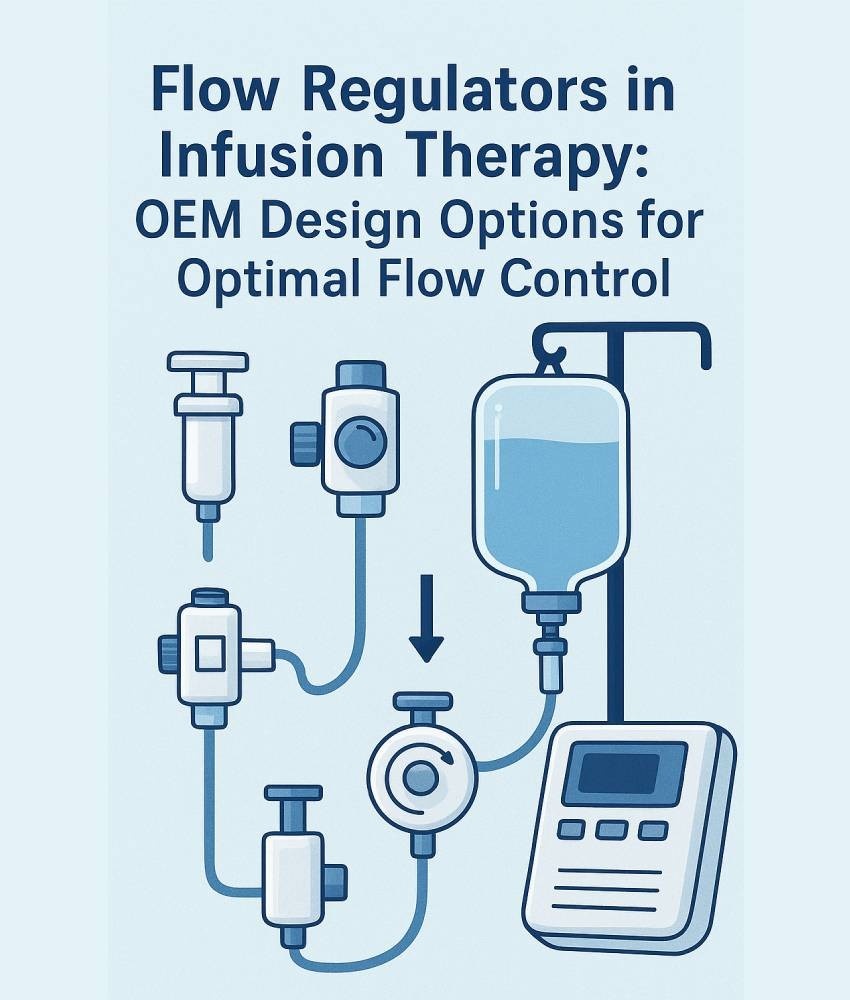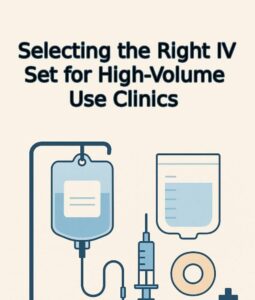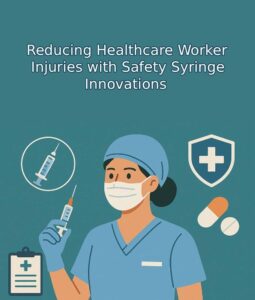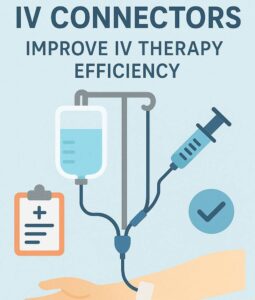Introduction to Flow Regulators in Infusion Therapy
In infusion therapy, precision and safety are paramount. Whether you’re developing a custom infusion flow regulator, sourcing an OEM IV regulator, or evaluating a reliable flow control set supplier, the design choices you make directly impact patient outcomes and operational efficiency. With healthcare providers demanding advanced features like automatic shut-off, anti-kink protection, and pump compatibility, understanding available OEM design solutions has never been more critical.
This article dives deep into key design options for infusion flow regulators, guiding OEMs, medical device manufacturers, and procurement teams toward informed decisions that align with quality, cost, and compliance requirements. Know more..
Why Choose a Custom Infusion Flow Regulator?
Precision and Safety
An infusion flow regulator controls the exact rate of IV fluid delivery, minimizing risks of overinfusion or occlusion. Proper regulation ensures consistent therapeutic delivery and helps avoid potentially life-threatening complications, especially during chemotherapy, neonatal care, and critical interventions.
Tailored Design for Diverse Use Cases
Custom designs enable:
- Micro-infusion ranges for pediatric and neonatal use (0.1–20 mL/h)
- High-volume hydration and transfusion settings (up to 1200 mL/h)
- Specialized applications like lipid emulsions and controlled opioid delivery
Understanding OEM IV Regulator Design Options
Mechanical vs. Electronic Flow Regulation
- Mechanical regulators use dial-a-flow technology and manual roller clamps for budget-friendly, non-electric applications.
- Electronic systems offer precision with digital readouts, programmable dosing, and integration with infusion pumps.
Single-Use vs. Reusable Components
- Single-use regulators minimize contamination risks and simplify logistics.
- Reusable housings paired with disposable flow channels or inserts offer a sustainable, hybrid cost-saving model.
Integration with Infusion Sets
Modern OEM IV regulator designs are often integrated into:
- Primary IV tubing
- Y-site connectors
- Needle-free injection sites
- Air-eliminating filters
This enhances setup efficiency and minimizes the risk of leaks or incorrect assemblies.
Key Features in a High-Performance Infusion Flow Regulator
Flow Accuracy and Stability
A high-quality regulator maintains flow within ±5% accuracy of its labeled rate, crucial in critical care where even minor deviations can be harmful.
Alarm & Safety Mechanisms
Top-tier regulators may include:
- Occlusion detection
- Pressure-limiting valves
- Free-flow prevention technology
- Visual or audible alarms
Standardized Connectors
Compatibility with Luer-lock or slip tips is essential for global integration.
Ease of Use & Ergonomics
Features like color-coded dials, tactile clicks, large flow indicators, and lockable controls improve usability—especially for fatigued staff during high-pressure care.
How to Choose the Right Flow Control Set Supplier
Manufacturing and Certification Standards
A reliable flow control set supplier should meet or exceed:
- ISO 13485 medical device quality management
- CE marking or FDA 510(k) clearance
- Sterile, GMP-grade cleanroom production
OEM Customization Capabilities
Look for manufacturers that offer:
- Multilingual labeling
- Brand-specific artwork
- Custom dial ranges and tubing lengths
- Regional packaging and documentation standards
MOQ and Cost Transparency
Be clear on minimum order quantities, setup costs for molds, tooling amortization, per-unit pricing, and shipping conditions. Good OEMs provide scalable solutions without compromising quality.
OEM Integration: From Concept to Market
Working with an OEM Partner for Flow Regulator Design
Collaborating with a seasoned OEM allows your team to:
- Conduct early design feasibility analysis
- Access tooling and mold customization services
- Expedite prototyping with in-house engineering support
- Secure regulatory-ready technical files
OEM Product Development Workflow
| Phase | Tasks Involved |
| Concept & Ideation | Flow range definition, clinical research |
| Design Engineering | CAD modeling, material selection |
| Prototyping | Small-batch molding, functionality tests |
| Validation | Flow accuracy, stress and pressure testing |
| Regulatory | CE, FDA, and ISO documentation |
| Mass Production | Mold finalization, QA protocol, OEM branding |
Clinical Applications by Setting
Emergency and Field Care
- Compact, lightweight units
- Self-adjusting flow features
- Minimal training required
Critical Care and Oncology
- Electronically controlled regulators with fail-safe alerts
- Integrated with smart infusion platforms
- High-precision dosing for cytotoxic and vasoactive drugs
Home Infusion Therapy
- User-friendly dials with lock-out settings
- Clear labeling for non-clinical users
- Safe transport and minimal monitoring required
Flow Rate Calibration and Testing Protocols
Why Flow Calibration Is Critical
Poorly calibrated regulators can lead to:
- Drug underdosing (ineffective treatment)
- Overdosing (toxicity, fluid overload)
- Delayed therapy
Regulatory Calibration Standards
ISO 8536-4 and EN 60601-2-24 are standard for:
- Gravimetric flow testing
- Drop consistency under variable pressure
- Environmental stability tests (temperature, humidity)
- Real-time occlusion response analysis
Packaging & Sterilization Considerations
Packaging and Shelf-Life
Your flow control set should feature:
- Tyvek® or PET sterile barrier pouches
- Gamma or EO sterilization compatibility
- Expiry marking and lot traceability
Shipping and Storage
Well-designed export packaging includes:
- UV- and moisture-resistant outer cartons
- Batch-level shrink-wrapped bundles
- GS1-compliant labeling and barcoding
Innovation and Market Trends
Smart Flow Regulators
Smart regulators now feature:
- Bluetooth modules
- Mobile app integration
- Real-time dosage tracking
- Cloud-based infusion analytics
Eco-Conscious Designs
- Recycled plastic dials
- Biodegradable outer wrap
- Slim-line packaging to reduce carbon footprint
Integrated Infusion Systems
New products combine flow regulation, anti-bacterial filters, air eliminators, and needle-free access ports into one compact unit.
FAQs About Infusion Flow Regulators
1. Can mechanical regulators match electronic ones for precision?
While mechanical regulators are reliable for basic applications, electronic models are superior in precision-critical scenarios like ICU and pediatric oncology.
2. Are single-use regulators sustainable?
Many are made with recyclable plastics and come in eco-friendly packaging. Hybrid designs offer a balanced solution.
3. What certifications should suppliers provide?
ISO 13485, CE marking, FDA 510(k), and sterilization process validations (e.g., ISO 11135 for EO).
4. Can I customize tubing or connectors?
Yes, reputable OEM IV regulator providers offer full customization of connector types, tubing diameter, color, and length.
5. How can I verify regulator accuracy?
Insist on test data, batch flow calibration reports, and compliance with ISO/EN testing standards from your OEM.
6. What’s the MOQ for OEM regulators?
Typical MOQ ranges from 5,000 to 10,000 units, depending on design complexity and packaging requirements.
Conclusion
Selecting the right infusion flow regulator design is essential to delivering safe and effective IV therapy. From sourcing a dependable OEM IV regulator to evaluating a certified flow control set supplier, every decision affects patient safety, regulatory compliance, and cost-effectiveness.
Stay ahead by embracing new technologies, eco-conscious materials, and integrated smart systems. Whether you’re targeting critical care units or at-home treatment kits, a strategic partnership with the right OEM ensures scalability, safety, and innovation in one package.






